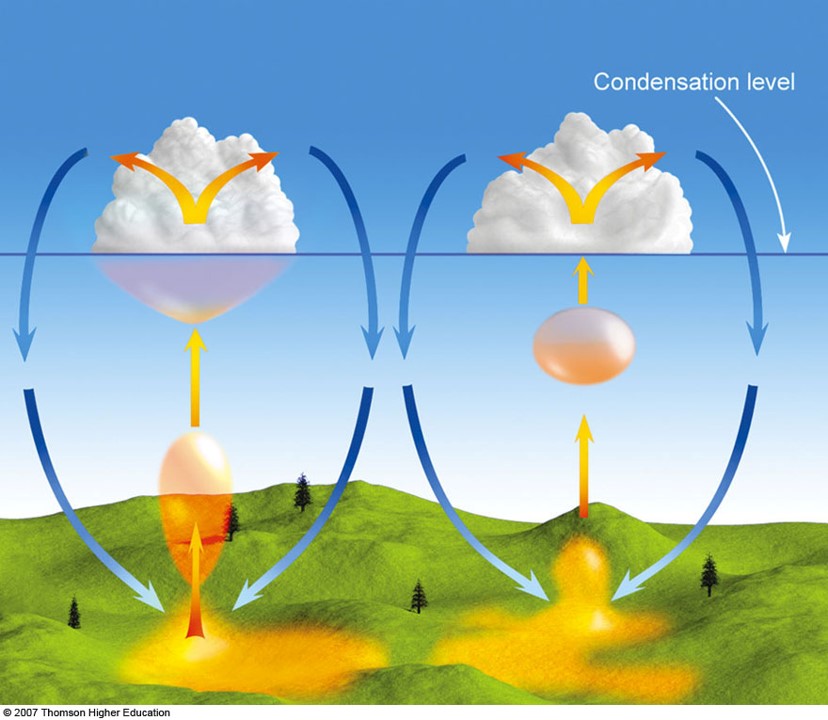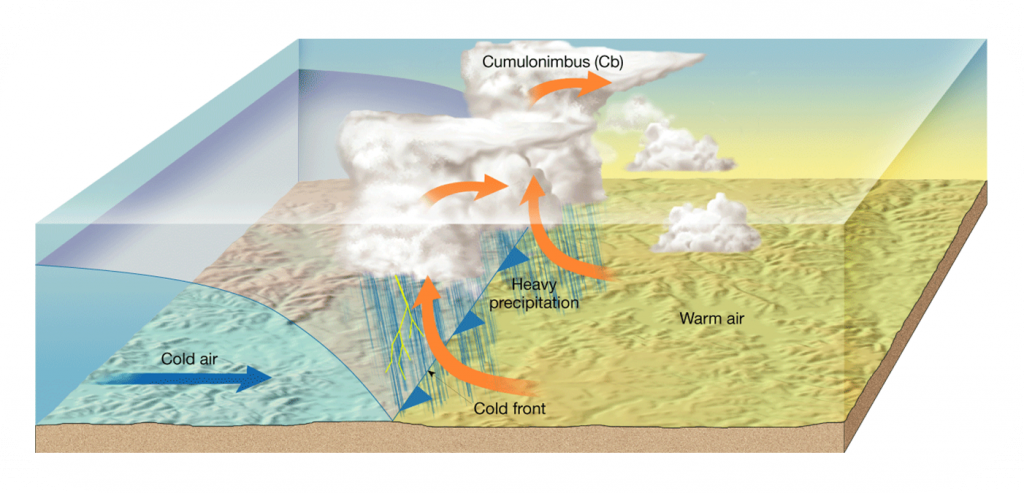As most Southerners know, the arrival of spring also means the arrival of severe weather season. On Wednesday morning, many Houstonians heard the first rumblings of serious thunder for 2018, and if history tells us anything, this is just the beginning of a potential spring full of thunderstorms, flooding, lightning and tornadoes. What is it about the springtime that initiates this activity?
Hot, Hot Heat
Thunderstorm formation depends on atmospheric stability. We’ll forego talk about lapse rates and latent heat for now, and describe stability in simple terms. During the wintertime, our atmosphere is generally very stable. This means that conditions in the air prohibit any vertical motion. For thunderstorms to develop, they need warm air to rise from the surface, then to cool and condense into a tall, vertical column of clouds. In a stable atmosphere, this is nearly impossible.
As winter turns to spring, two things occur that make the atmosphere much more unstable. First, the air around us, especially if that air comes in from the Gulf, becomes much warmer and much more humid. Yesterday, February 20th, Bush Intercontinental Airport recorded a high of 80°F, with relative humidity values staying above 70%. This warm, moist air mass created a perfect environment of instability around us.

Second, as days become longer and the sun rises higher in the sky, the sun heats the ground, which, in turn, heats the air directly above the ground. This warm air will eventually rise in an unstable atmosphere, pushing cold air out of the way, as the diagram above shows. As it goes up, the air begins to cool, and as it cools, the water vapor in the air will condense–into clouds! If the atmosphere remains unstable, and these pockets of warm, condensing air rise rapidly, we have the recipe for a thunderstorm.
With thunderstorm formation, the intensity varies depending on the stability of the atmosphere, and the rate at which the warm pockets of air rise and condense. The intensity of these storms can range from brief, scattered single-cell thunderstorms to a large-scale, tornado producing supercell. However, there is one other springtime weather feature that factors into thunderstorm formation—the front.
Down in front!
Even though wintertime is nearly over, Texas still experiences cold fronts well into the spring. On average, Texas sees 6-8 fronts a month during the spring months of March, April, and May. Cold fronts have an exacerbating effect on thunderstorm formation, because of the way they force warm air to rise and condense.

The cold, very dense air of a cold front acts like a fast moving plow against the warm, moist air in front of it, lifting it with great intensity. If warm, moist air blows in simultaneously from the Gulf, the two combine to create an atmospheric game of chicken, with dynamic results. Thunderstorms ahead of a cold front will form very quickly, and become much stronger than a typical single-cell storm. Several storms will form along the frontal boundary, creating a squall line. These squall lines can become very intense, and bring heavy flooding, frequent lightning, and tornadoes with them. If a cold front then stalls out, these storms can last for days, increasing the risk of flooding.
While the busiest months for thunderstorms in Houston are usually July and August (thanks, sea breeze!), the city sees, on average, 63 days with thunderstorms a year. As we anticipate more storms ahead, now would be a good time to take a look back at what to do before, during, and after thunderstorms and tornadoes, and get yourself ready for another season of severe Houston weather.

That you for this excellent information. I appreciate how you have explained our current weather situation.
I love summer thunderstorms..So long as they are not destructive..However my Simon (beloved fur baby) hates thunder and lightening ..
On 2/21, in the Hill Country, we had thunderstorms, almost all day; then that night with the temperature in the low 30’s, we had a storm with hail, followed by freezing rain. This was rather unusual & makes me wonder what occurred.
I have an extreme mental health problem and these articles help me compensate with my PTSD also no one cares about your fur babies, Lisa. Also for some reason my hands smell like playdoh now maybe it was when I tried to pet the ferrel Chamaeleon this morning (it pissed on me). Sorry thats a bit off topic. Anyways Thats all I have to say for this issue. Subscribe to Pewdiepie. Captain Puerto Rico over out.
How dare you talk bad about my cousin Lisa and her beloved fur baby. just for your information her fur baby is awesome and smells like cat pee.